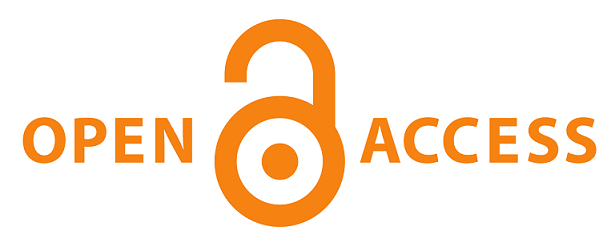“Waiting for the Germans to Come”: Persecution of Kyivans by Soviet Special Services in the First Months of the Nazi Invasion (22 June — 18 September 1941)
DOI:
https://doi.org/10.28925/2524-0757.2025.17Keywords:
war, martial law, terror, repression, NKGB, NKVD, Special Board, military tribunalsAbstract
The article analyses the functioning of the Stalinist punitive and repressive system during the period of extreme violence, formally caused by the war, and repression against the residents of the capital of the Ukrainian SSR. The research objectives are to reveal the organisational and procedural peculiarities of repression in areas where a special legal regime, martial law, was declared; to analyse punitive practices, identifying each link in the chain of extrajudicial killings; and to elucidate the unprecedented persecution and extermination of people based solely on the directives and orders of heads of the Soviet special services. The scientific novelty of the work lies in the application of a comprehensive approach to studying political terror, combining an analysis of legal acts with empirical data on the repressed. This makes it possible to go beyond the general concept of political terror and to reconstruct a detailed picture of its manifestations in a totalitarian regime, demonstrating a departure from generally accepted legal norms. It is proved that the Soviet state, built on violence and disregard for human rights, actively used special courts as well as an extrajudicial body — the Special Board of the NKVD — in the massacre of Kyiv residents who were identified as ‘unstable’ and ‘socially dangerous’. The pinnacle of legal nihilism was the fact that even the aforementioned instruments of terror were ignored by the perpetrators of the repression. Some Kyiv residents — representatives of the creative and scientific intelligentsia — were deprived of their freedom and lives without even being convicted. The Soviet power, using martial law as a pretext, resorted to employing the laws and the web of sub-legal regulations formed in the pre-war years exclusively to serve the totalitarian regime and the evil it generated. Repressions were imposed on wide sections of townspeople accused of anti-Soviet and pro-German sentiments.
Downloads
References
Bazhan, O. H. (2012). Politychni represii u Kyievi v chasy Druhoi svitovoi viiny. Naukovi zapysky NaUKMA, Vol. 130: Istorychni nauky, 23–27 [in Ukrainian].
Berkhof, K. (2011). Zhnyva rozpachu. Zhyttia i smert v Ukraini pid natsystskoiu vladoiu: per. s angl. (T. Tsymbal. Trans), (pp. 24–28). Kyiv: Krytyka [in Ukrainian].
Epifanov, A. (2016). Osoboe soveshhanie NKVD/MVD/MGB SSSR v borbe s gitlerovskimi voennymi prestupnikami i ix posobnikami (1941–1953 gg.). Pravo i praktika, 2, 20–28 [in Russian].
Kulakovskyi, P. (1994). Rozstriliani na pochatku viiny. Z arkhiviv VUChK-HPU-NKVD-KHB, 1, 192–228 [in Ukrainian].
Mozokhin, O. (2006). Pravo na repressii: Vnesudebnye polnomochiya organov gosudarstvennoy bezopasnosti (1918–1953). Мoscow: Kuchkovo pole [in Russian].
Obuxov, V. V. (2002). Pravovye osnovy organizatsii i deiatelnosti voennykh tribunalov voisk NKVD SSSR v gody Velikoi Otechestvennoi voiny 1941–1945 gg. (istoriko-pravovoe issledovanie). Extended abstract of of Candidate’s thesis [in Russian].
Okipniuk, V. (2002). Pozasudovi orhany. In Yu. S. Shemshuchenko (Ed.), Yurydychna entsyklopediia: v 6 t. (Vol. 4, p. 612), Kyiv [in Ukrainian].
Okipniuk, V. (2019). Radianski orhany derzhavnoi bezpeky v Ukraini v period panuvannia totalitarnoho rezhymu (1929–1953 rr.). Kherson: OLDIPLIuS [in Ukrainian].
Shirer, D. (2014). Stalinskii voennyi sotsializm: repressii i obshchestvennyi poriadok v Sovetskom Soiuze, 1924–1953 gg. Мoscow: ROSSPEN [in Russian].
Solomon, P. Jr. (1982). Criminalization in Soviet Criminal Policy, 1917–1941. Law and Society Review, 16(1), 9–44 [in English].
Tyazin, E. (1996). Antikonstitutsionnaia i protivopravnaia deiatelnost Osobogo soveshchaniia pri NKVD-MGB-MVD SSSR i drugikh nesudebnykh organov. Vestnik Mordovskogo un-ta, 2, 15–20 [in Russian].
Vronska, T. (2023). Povnovazhennia ta karalna praktyka Osoblyvoi narady pry NKVS SRSR u roky Druhoi svitovoi viiny. Storinky voiennoi istorii Ukrainy, 27, 28–42 [in Ukrainian]. https://doi.org/ 10.15407/sviu.2023.27.028
Vronska, T., Pylypchuk, V., & Belaniuk, M. (2021). Tsyvilne naselennia radianskoi Ukrainy v poli zoru viiskovykh trybunaliv: reglamentatsiia karalnykh praktyk (1918–1959 rr.). Ukrainskyi istorychnyi zhurnal, 2, 112–128 [in Ukrainian]. https://doi.org/10.15407/uhj2021.02.112
Vronska, T., Zabolotna, T., Kentyj, A., Kokin, S., Lysenko, O., & Pastushenko, T. (Comps.). (2014). Kyiv: viina, vlada, suspilstvo. 1939–1945 rr.: Za dokumentamy radianskykh spetssluzhb ta natsystskoi okupatsiinoi administratsii, (pp. 16–192). Kyiv: Tempora [in Ukrainian].
Vronska, T., & Lysenko, O. (2002). Teror proty vlasnoho narodu. In V. A. Smolii (Ed.), Politychnyi teror i teroryzm v Ukraini. XIX–XX stolittia: Istorychni narysy, (pp. 677–698). Kyiv: Naukova dumka [in Ukrainian].
Vronska, T., & Styazhkina, O. (2021). Minusniki. Pokarany prostorom. Kyiv: Tempora. [in Ukrainian].
Zinchenko, O. (2019, 10 July). Yak Khrushchov ubyv Dontsia. I potim zbrekhav. Istorychna pravda [in Ukrainian]. https://www.istpravda.com.ua/columns/2019/07/10/155927
Zvyagintsev, V. (2006). Voina na vesakh Femidi: voina 1941–1945 gg. v materialakh sledstvenno-sudebnikh del. Мoscow: TERRA–Knizhnii klub [in Russian].
Published
How to Cite
Issue
Section
License
Copyright (c) 2025 Тамара Вронська, Тетяна Заболотна

This work is licensed under a Creative Commons Attribution-NonCommercial-ShareAlike 4.0 International License.
Authors who publish in this journal retain the right of authorship of the work and give to the journal right of first publication of this work under the conditions of Creative Commons: Attribution-NonCommercial-ShareAlike 4.0 International (CC BY-NC-SA 4.0), which allows others freely distribute the work published with reference to the authors of the original work and the first publication of this magazine.














